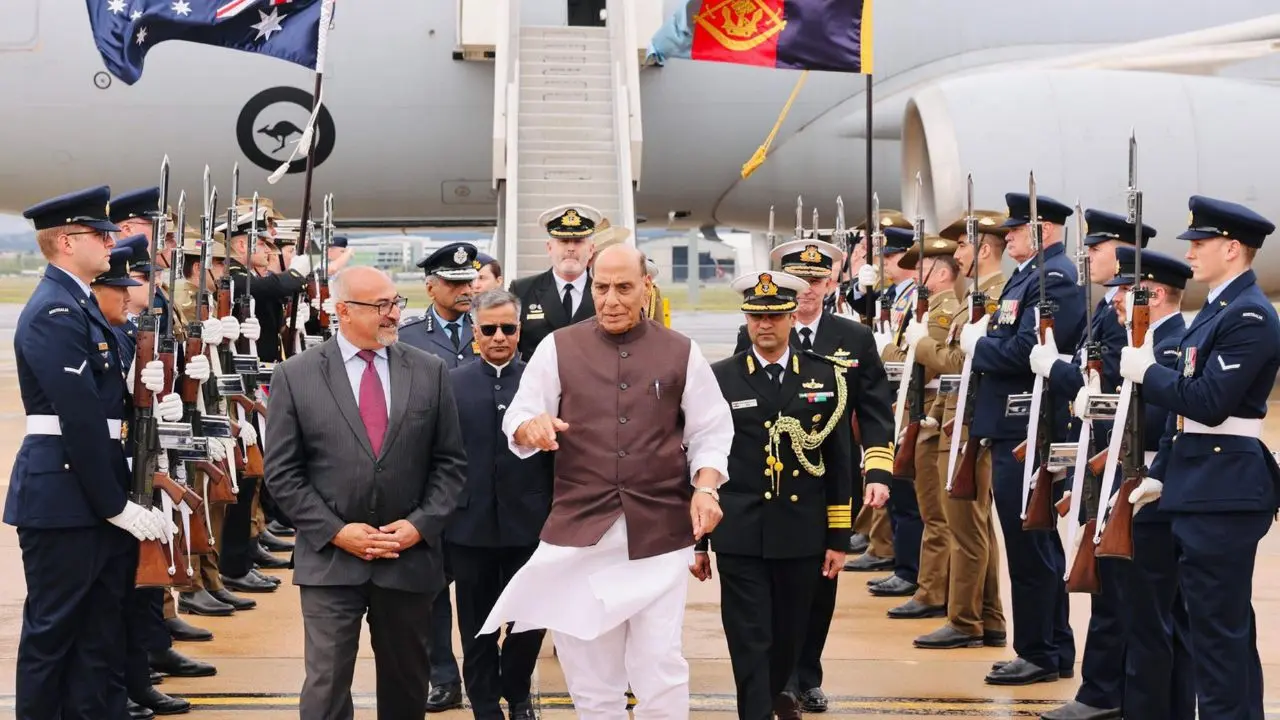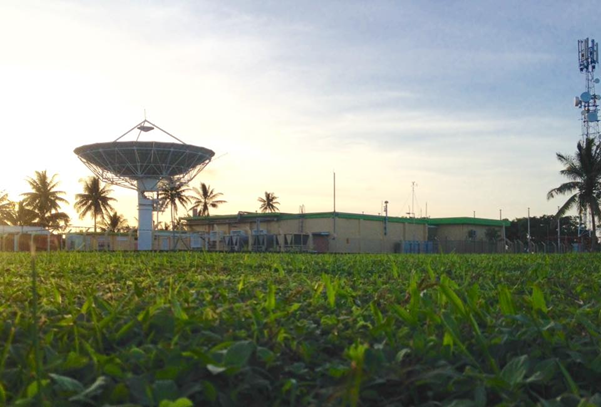India’s Defence Minister Rajnath Singh’s 9-10 October 2025 visit to Australia marked a watershed in Indo-Australian relations. The visit delivered concrete, future-oriented defence and security cooperation outcomes that align closely with the Indo-Pacific strategies of both countries.
Coming amid the fifth anniversary of the Comprehensive Strategic Partnership, this visit highlighted how Canberra and New Delhi view each other as security partners, and how operationalisation of strategic alignment across maritime security, industry, logistics, defence technology and intelligence sharing defines this partnership.
To maintain multipolarity and a stable balance of power, the Indo-Pacific requires credible coordinated measures. Since the 2020 Galwan standoff, India has consciously tilted towards a minilateral and multilateral soft balancing approach to China, seeking to undermine China’s power and frustrate its government’s agendas. For Australia, the 2024 National Defence Strategy (NDS) reorients defence planning around the concept of National Defence and a Strategy of Denial, prioritising an integrated, focused force capable of upholding a favourable regional strategic balance, free from coercion. Australia’s partnership with India, especially at sea and in the air, makes the bilateral defence relationship a viable alternative to maintaining a rules-based order in the Indo-Pacific.
Over the past few years, Canberra and New Delhi have consolidated their partnership through multiple building blocks that inspire trust and confidence. The Mutual Logistics Support Arrangement, signed in mid-2020, enables access, refuelling and repair, which is vital for persistence in the Indian Ocean. Successive dialogues, including Australian Defence Minister Richard Marles’ visit to New Delhi in June 2025, have strengthened the information-sharing and maritime security cooperation between the two countries. In 2024, India and Australia signed an arrangement, enabling the Royal Australian Air Force and the Indian Armed Forces to conduct air-to-air refuelling, further fortifying interoperability and India’s reach in the Indo-Pacific region. India’s participation in the Talisman Sabre 2025 added a high-end, joint force layer to the exercise calendar, complementing the navy-to-navy and air-to-air links already in operation between Australia and India.
Singh’s visit was structured around the inaugural Australia–India Defence Ministers’ Dialogue, which produced a detailed joint statement. The headline outcome was the Australia–India Implementing Arrangement on Mutual Submarine Rescue Support and Cooperation. This arrangement will not only deepen undersea trust and coordination between both countries but also help counter China’s power projection in the Indian Ocean, often framed as a two-oceans strategy. The establishment of Joint Staff Talks is another key development, providing a robust forum for joint exercises, operations and interoperability across domains.
Emphasising the strategic importance of defence-industrial collaboration, Australia and India agreed to collaborate on contemporary defence technology, including Joint Working Groups on defence industry, research and materiel. India will continue to offer maintenance, repair and overhaul (MRO) of Royal Australian Navy ships in Indian shipyards while deployed in the Indian Ocean, thus providing another concrete step that shortens the sustainment period.
The Australia-India Defence Industry Roundtable , while highlighting India and Australia as natural partners, proved a catalyst for unlocking unrealised potential, leading Australian companies to partner with Indian firms for co-production. This platform is expected to further strengthen the bilateral relationship through industry engagement and technology-driven innovation.
The first Indian defence ministerial visit after 12 years moved the Australia–India relationship from strategic alignment to operational depth. Each of these developments aligns with Australia’s future security strategy. The NDS includes the strategy of denial, which emphasises survivability, lethality, interoperability and collective deterrence. These attributes are strengthened by submarine rescue cooperation, anti-submarine warfare activities, maritime domain awareness uplift and air-to-air refuelling integration. Australia’s push for an integrated, focused force and minimum viable capability aligns with the staff-to-staff planning, frequent joint exercises, and rapid clearances through Joint Staff Talks.
The Defence Industry Development Strategy 2024 prioritises accelerated capability delivery, rapid innovation and shorter acquisition cycles to grow and sustain industrial capabilities, as part of the sovereign defence-industrial base. The Defence Industry Round Table, trade mission architecture, and Indian MRO pathways enhance practical levers to deliver capability faster and with greater resilience.
The timing of the visit also dovetailed with Exercise AUSTRAHIND, a bilateral land exercise running in Perth from 13–26 October 2025, focusing on company-level operations in urban and semi-urban settings. Welcomed in the ministers’ joint statement as part of an enhanced exercise regime, it reinforces interoperability and joint company-level operations and feeds lessons back into the new Joint Staff Talks initiative.
Overall, the outcomes of the visit are impressive on three fronts. Firstly, they turn political and strategic alignment between Canberra and New Delhi into operational mechanisms, such as submarine rescue, MRO, staff talks and refuelling. Secondly, they advance industrial reciprocity that lowers sustainment risk on both sides while accelerating capability development and innovation. Thirdly, they expand the bilateral partnership into a wider regional role, without forcing either party into treaty commitments, consistent with their strategic preferences.
Firming of the undersea collaboration between the two navies, air integration leading to tanker clearances and cross-deployments as standard practice, and deepening industry linkages supporting enhanced sustainment and accelerated capability delivery, collectively, these three trajectories align with Australia’s National Defence Strategy 2024 and India’s calibrated soft-balancing approach to managing regional power transitions. In sum, adding strategic value not only for Canberra and New Delhi, but also for the broader Indo-Pacific and its regional partners.
Dr Dalbir Ahlawat is a Senior Lecturer in Security Studies in the School of International Studies at Macquarie University, Sydney, Australia.
Kapil Singh is a PhD scholar in Security Studies, School of International Studies, Macquarie University.
This article is published under a Creative Commons License and may be republished with attribution.





